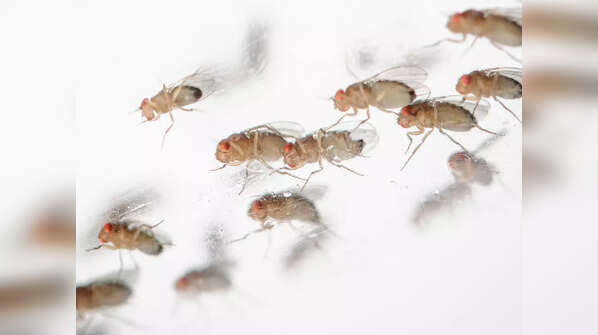Animals that have been sent to space

Animal astronauts
Humanity’s quest to explore the cosmos has been marked by numerous milestones, and among these are the extraordinary journeys undertaken by animals. These intrepid creatures, ranging from the tiniest of insects to our closest primate relatives, have been critical in expanding our understanding of space and its effects on biological life. Their missions have paved the way for human spaceflight and have provided invaluable data that has shaped our approach to space exploration. Each animal sent to space has played a role in unraveling the mysteries of the universe and ensuring the safety of astronauts who would follow in their path. Let’s embark on a retrospective journey to honor these animal astronauts and their historic flights.
Image: NASA

Fruit flies
The first animals to breach the bounds of Earth’s atmosphere were fruit flies. On February 20, 1947, these tiny insects were aboard a U.S.-launched V-2 rocket from White Sands Missile Range, New Mexico. The purpose of this pioneering mission was to study the effects of radiation exposure at high altitudes. The fruit flies were chosen for their biological similarities to humans, particularly in genetics, despite their diminutive size. This historic flight marked the beginning of biological space research, and the recovered flies were found to be unharmed upon their return, paving the way for future animal and human spacefarers.
Image: NASA

Albert II
Albert II, a rhesus monkey, holds the distinction of being the first primate in space. On June 14, 1949, he soared above the Kármán line—the boundary between Earth’s atmosphere and outer space—aboard a V-2 rocket. Although the mission provided valuable data on living organisms’ responses to spaceflight, it ended in tragedy. Albert II perished on impact after a parachute failure during his return to Earth. His sacrifice contributed significantly to our understanding of the physiological effects of space travel on complex organisms.
Image: NASA

Laika
Laika, a stray dog from the streets of Moscow, was the first animal to orbit Earth. She was launched aboard Sputnik 2 on November 3, 1957, by the Soviet Union. Laika’s mission was to demonstrate the feasibility of living beings surviving the launch and the conditions of space. Unfortunately, Laika died a few hours after launch due to overheating and stress. Her journey provided crucial data that helped shape future human space exploration programs.
Image: NASA

Belka and Strelka
Belka and Strelka became the first animals to enter space and return alive. On August 19, 1960, these two Soviet space dogs were launched aboard Sputnik 5. Along with a payload of plants and insects, they orbited the Earth and safely returned the next day. The success of their mission was vital in proving that living organisms could endure spaceflight and its associated stresses, such as weightlessness and cosmic radiation, and return in good health.
Image: ROSCO

Félicette
Félicette, a French cat, became the first and only feline to reach space. On October 18, 1963, she was launched by the French space agency aboard a Veronique AG1 rocket. The mission aimed to study the effects of spaceflight on brain activity. Electrodes implanted in Félicette’s brain transmitted neurological signals back to Earth. She experienced six minutes of weightlessness and returned safely, contributing valuable data to the field of space medicine.
Image: CNES

Enos
Enos, a chimpanzee, was the first of his kind to orbit the Earth. On November 29, 1961, he was launched aboard the Mercury-Atlas 5 spacecraft by NASA. Enos completed two orbits and demonstrated the ability to perform tasks during the flight. His mission was a full-scale rehearsal for the upcoming human orbital flights and provided confidence in the Mercury spacecraft’s systems. Enos landed safely, although the mission was cut short due to a malfunctioning environmental control system.
Image: NASA

Tardigrades
Tardigrades, also known as water bears, are microscopic organisms known for their resilience. In September 2007, they became the first animals to survive the vacuum of space. During the European Space Agency’s FOTON-M3 mission, tardigrades were exposed to the harsh conditions of space for ten days. They endured the vacuum, cosmic rays, and solar ultraviolet radiation without any protection. Upon their return to Earth, many of them were revived and even reproduced, showcasing their extraordinary ability to withstand extreme environments.
Image: NASA









